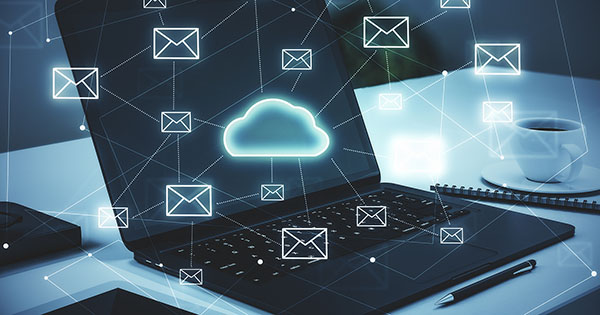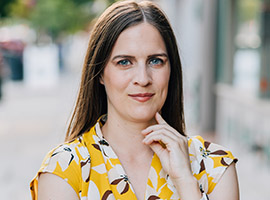artificial intelligence (ai)
How AI is Changing the Success of Your Fundraising Emails

Artificial intelligence (AI) is one of the most discussed topics in the fundraising landscape today. AI is leading many of us to step back as fundraisers to evaluate how we interact with our donors and how we can streamline our efforts to be as efficient and precise as possible. For many of us, we’re also still trying to figure out how AI fits into our traditional (and perhaps nontraditional) fundraising efforts (something we have also been discussing).
While AI may be “new” to us in fundraising, it’s already been incorporated into a space we regularly visit—our email communications. AI has been influencing your email success for the past several years.
How is AI already impacting fundraising emails?
Before your donor ever sees your fundraising email, their email provider is using AI to determine if your email should go into the inbox or be relegated to the dreaded spam folder. Here are three things AI is checking:
- Searching for traditional red flags such as bad links, questionable subject lines, suspicious content, and authentication records added to your email domain by your IT department for every email platform you send from (or if you have others sending on your behalf).
- Reviewing older emails received from the same email domain name to see if the same information has been repeated, how often the recipient receives emails from that same domain name, and how many recipients are receiving the exact same email on their platform.
- Creating a “safer” user experience with security software automatically opening emails, creating fake clicks to test hyperlinked information, and potentially even opting out of emails before the donor sees it.
You don’t even realize it’s happening—myself included! I had signed up for a new fundraising email series, but after receiving the first email, I never saw another one. I knew they were going out but had no idea why I was no longer seeing them. Curious, I reached out to their campaign manager to find out I had been marked unsubscribe. Because their unsubscribe process is a single click taking you to a confirmation page, Microsoft’s AI flagged the email and opted me out without my knowledge. (If you’re wondering how to avoid this, consider using a landing page where the recipient must select an option from a dropdown before clicking the opt-out button).
4 best practices for fundraising emails in the age of AI
The way we send and manage our email platforms has rapidly evolved in the past five years. The great systems you created pre-pandemic will not be enough to get your fundraising emails to the donor’s inbox today. Your approach has to evolve with the changes in technology. Here are four best practices to build into your current email strategy to help AI work on your behalf:
1. Work with your IT team to make sure your emails are authenticated before anything is sent out
If another team in your organization is also sending from your domain, you may see issues arise if every different platform isn’t aligned. Make sure you maintain lines of communication with your IT department about every source sending emails for you. At RNL, we ran an audit for all our client partners and their IT departments to make sure their email authentication efforts meet new standards implemented by Gmail and Yahoo this past spring.
2. Warm your email domain before a large email campaign is sent
We don’t spend a lot of time thinking about our email domain name—think the “@university.edu” in your from email address—but AI is certainly paying attention! By sending regular communications, especially during the slow fundraising months, AI will begin to recognize your email domain as a trusted source. The best part is that these emails don’t have to be solicitations. Monthly newsletters from alumni relations, stewardship efforts from your donor relations team, and others all count towards the warming efforts AI is reviewing when you send your large email solicitation campaigns for efforts like a giving day. Know that it will only work as long as your colleagues are using the same “@university.edu” domain address.
3. Segment your audience
Segmentation helps more than your donor pipeline. If you’re sending the same message to everyone in your database all at once, you’re more likely to get caught in a spam filter. If you send the same message year after year with minimal changes, you’re more likely to get caught in a spam filter. Sending good content to the right audiences helps AI identify that your emails are authentic and safe to deliver to a donor’s inbox.
4. Check your campaign results regularly
Year-over-year campaign comparisons aren’t as helpful as they used to be when it comes to email campaigns. With the changes in technology and the inclusion of AI, results can shift quickly. You need to consistently compare one email campaign to the next campaign to see if there is a dramatic change in open rates, click rates, bounce backs, and unsubscribes. A dramatic drop in open and click rates indicates you’ve been caught in a spam filter. Recognize that email platforms are introducing new technology on a regular schedule and adjusting their algorithms to keep as much malicious content out of inboxes as possible.
What’s your next step for sending successful fundraising emails?
If all of this feels overwhelming, there’s one guiding principle you should follow: Send good content to your engaged prospects on a consistent basis. Follow that, and you’ll be at a good starting point to help AI work with you instead of against you.
And if you’re looking at your long list of things to do and realize you don’t have the time to add email health to the long list of everything you need to get done, you can request a complimentary consultation with our fundraising experts. We’ll set up a time to share omnichannel communication strategies that are working for institutions like yours to make sure you are sending the right message to the right donor at the right time.
Talk with our fundraising experts
Let’s talk about how you can increase donor engagement and strengthen your donor pipeline. Ask for a free consultation with our experts.
